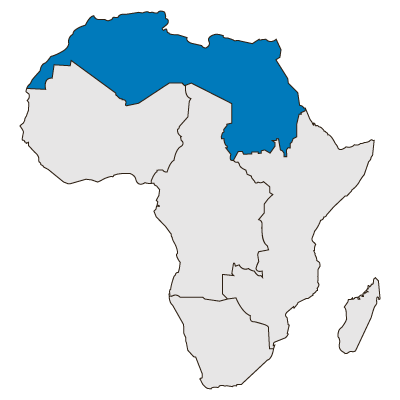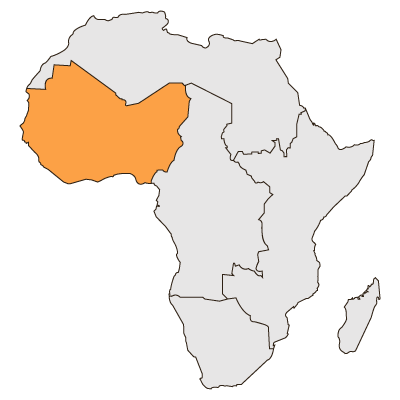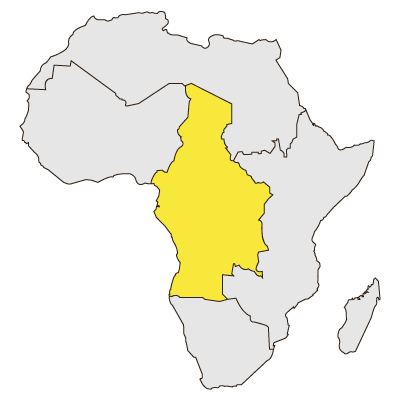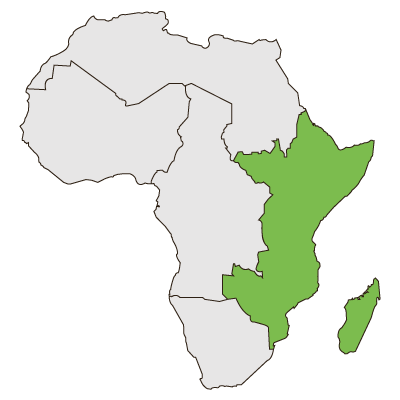Regions
North Africa
Countries
Algeria, Egypt, Libya, Morocco, North
Sudan, Tunisia, Western Sahara
Population
size
Estimate 219 041 065
Main
health concerns
North Africa has a different set of health challenges than the rest of Africa. According to the World Bank,
non-communicable diseases such as heart disease, strokes and diabetes are
becoming primary causes of death and disability in the North Africa. Risk
factors for non-communicable diseases in the region include unhealthy eating
and consequent obesity, high blood pressure and smoking. Non-communicable
diseases are spreading so fast that the World Bank argues that the disease
burden in North Africa is becoming similar to that of the United States and
Western Europe. The 2013 Global Burden of Disease report found that lower back pain, depressive disorders, anaemia and diabetes are
commonly responsible for disability. Malnutrition, particularly among children,
is also a significant problem.
HIV is not as prevalent as in sub-Saharan Africa and infections are mainly concentrated in high risk groups such as commercial sex workers, intravenous drug users and men who have sex with men. The region has made progress in expanding access to basic healthcare services and improving the health status and quality of life of its population.
Countries in regions have been categorised according to World Health Organisation and South African Development Community definitions. Regional populations have been calculated based on World Bank figures.
West Africa
Countries
Mauritania, Mali, Niger, Senegal, Guinea,
Sierra Leone, Cote d’Ivoire, Burkina Faso, Ghana, Togo, Benin, Nigeria, Cape Verde,
Guinea-Bissau, Liberia, The Gambia
Population size
Estimate 343 794 794
Main
health concerns
West Africa featured in the news almost daily in 2014 and 2015 because of the emergence of Ebola in Guinea,
Liberia and Sierra Leone. These countries had to cope with an Ebola outbreak
amidst a shortage of medical personnel, weakened infrastructure and inadequate
healthcare budgets.
HIV, malaria and tuberculosis are health challenges in the region, although West Africa’s HIV prevalence is considerably lower than on the rest of the continent. According to the World Health Organisation, in 2010 70-80% of West Africans used traditional medicine for healthcare and disease management of HIV, malaria, tuberculosis, heart disease and diabetes.
According to the African Economic Outlook 2015 poverty and inequality levels are moderate in comparison to the rest of Africa. The Economic Community of West African States (ECOWAS) has partnered with the Joint United Nations Programme on HIV and Aids to adopt the ECOWAS Regional Pharmaceutical Plan to boost the local pharmaceutical production of antiretroviral drugs and essential medicines for infectious and non-communicable diseases such as heart failure, diabetes and stroke.
Countries in regions have been categorised according to World Health Organisation and South African Development Community definitions. Regional populations have been calculated based on World Bank figures.
Central Africa
Countries
Cameroon, Central African Republic, Chad,
Congo, Equatorial Guinea, Gabon, Sao Tome e Principe
Population
size
Estimate 48 177 903
Main
health concerns
Central
Africa spans the equatorial belt and is
home to a number of tropical, viral and waterborne diseases. In the context of
its tropical climate and meningitis in Central Africa, the spread of communicable diseases such as cholera
is a continual battle fought by governments and
international organisations. Mosquito borne diseases,
including malaria and yellow fever and infectious diseases such as tuberculosis and HIV also pose persistent challenges. According to the United Nations Children’s Fund,
child mortality, malnutrition and internal displacement put pressure on
healthcare systems.
Protracted civil wars in the Central African Republic (CAR) and Chad have destabilised healthcare in these countries. The region is reliant on international organisations such as Doctors Without Borders, the World Health Organisation and the Centres for Disease Control to provide access to healthcare during conflict periods and for sustained healthcare development.
Countries in regions have been categorised according to World Health Organisation and South African Development Community definitions. Regional populations have been calculated based on World Bank figures.
East Africa
Countries
Burundi, Comoros, Djibouti, Eritrea,
Ethiopia, Kenya, Reunion, Rwanda, Somalia, South Sudan, Uganda
Population
size
Estimate 220 431 483
Main
health concerns
According to the United Nations Children’s Fund, HIV and
tuberculosis in East Africa are relatively controlled because of wide scale
treatment, particularly in Kenya and Tanzania where prevalence rates are as
high as 6% and 5% respectively. But these diseases remain a challenge for the
healthcare system because treatment needs to be provided to large numbers of
people.
East Africa forms part of the meningitis belt where the disease - a highly contagious inflammation of the membranes covering the brain and spinal cord - is endemic. The meningitis belt stretches over 26 countries from Senegal in West Africa to Ethiopia in East Africa. In parts of East Africa, including Kenya, Somalia and Tanzania, cholera, an infectious disease that causes severe watery diarrhoea, is also endemic.
According to the African Economic Outlook, East Africa has the highest project population growth in Sub-Saharan Africa. Environmental changes related to the increased use of land to grow crops as a result of a fast growing population have resulted in higher temperatures. In turn, this has created a breeding environment for mosquitoes that spread mosquito borne diseases such as malaria and yellow fever. While mosquito borne diseases are decreasing in the region because of effective interventions, they remain a concern in Kenya, Ethiopia and Uganda.
Other insect borne diseases that occur in the region include sleeping sickness (African trypanosomiasis), dengue fever (a viral disease borne by mosquitoes resulting in fever) and bilharzia (a disease caused by parasites that can result in urinary tract or intestinal infections).
Countries in regions have been categorised according to World Health Organisation and South African Development Community definitions. Regional populations have been calculated based on World Bank figures.
Southern Africa
Countries
Angola, Botswana, Democratic Republic of
Congo, Lesotho, Madagascar, Malawi, Mauritius, Mozambique, Namibia, Seychelles,
South Africa, Swaziland, United Republic of Tanzania, Zambia, Zimbabwe
Population
size
Estimate 312 733 132
Main
health concerns
Southern Africa is the world’s epicentre of the HIV epidemic: according to the United Nations the region has the highest
prevalence of HIV, with Swaziland having the highest infection rate in the
world (27.7% according to 2014 Joint United Nations Programme on HIV and Aids data)
and South Africa having the largest number of people with HIV (6.8 million
according to 2014 Joint United Nations Programme on HIV and Aids data). South
Africa has the world’s largest public sector HIV treatment programme.
Tuberculosis is spreading in key populations that are also vulnerable to HIV infection, including miners, sex workers, cross border truck drivers and men who have sex with men.
Some countries in the region, such as South Africa and Zambia experience regular drug stock-outs and challenges with the distributions of medicine.
Diabetes, heart disease and strokes are high risk non-communicable diseases in Southern Africa. The World Health Organisation attributes poor structural resources, the departure of skilled professionals and limited budget transparency as some of the reasons for elevated disease burdens in the region.
Countries in regions have been categorised according to World Health Organisation and South African Development Community definitions. Regional populations have been calculated based on World Bank figures.
Sign Up For Our Weekly Newsletter

How to pack the best lunch for your kids in five easy steps
Not up to the daily dilemma of what to pack your little ones for lunch? Beef up your children’s lunch boxes with these quick tips.
New graduates, rural areas likely to pay the price for austerity measures
Some pharmacists will be doing their community service at private pharmacies amid a shortage of posts.
[EXCLUSIVE] Gauteng health MEC: Court threats fly over patient deaths
Gauteng health MEC Qedani Mahlangu breaks her silence over the department's deadly decision to transfer psychiatric patients.




